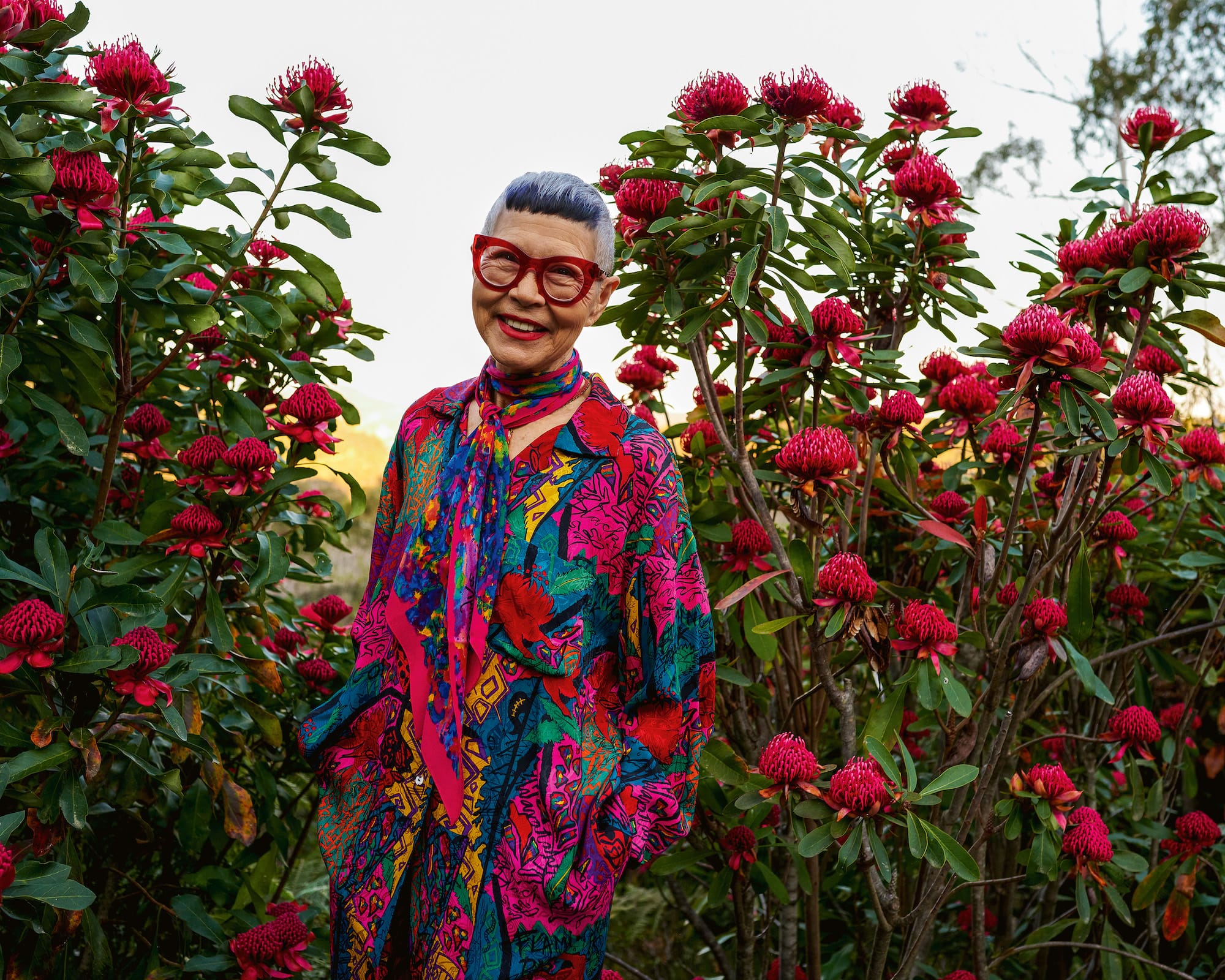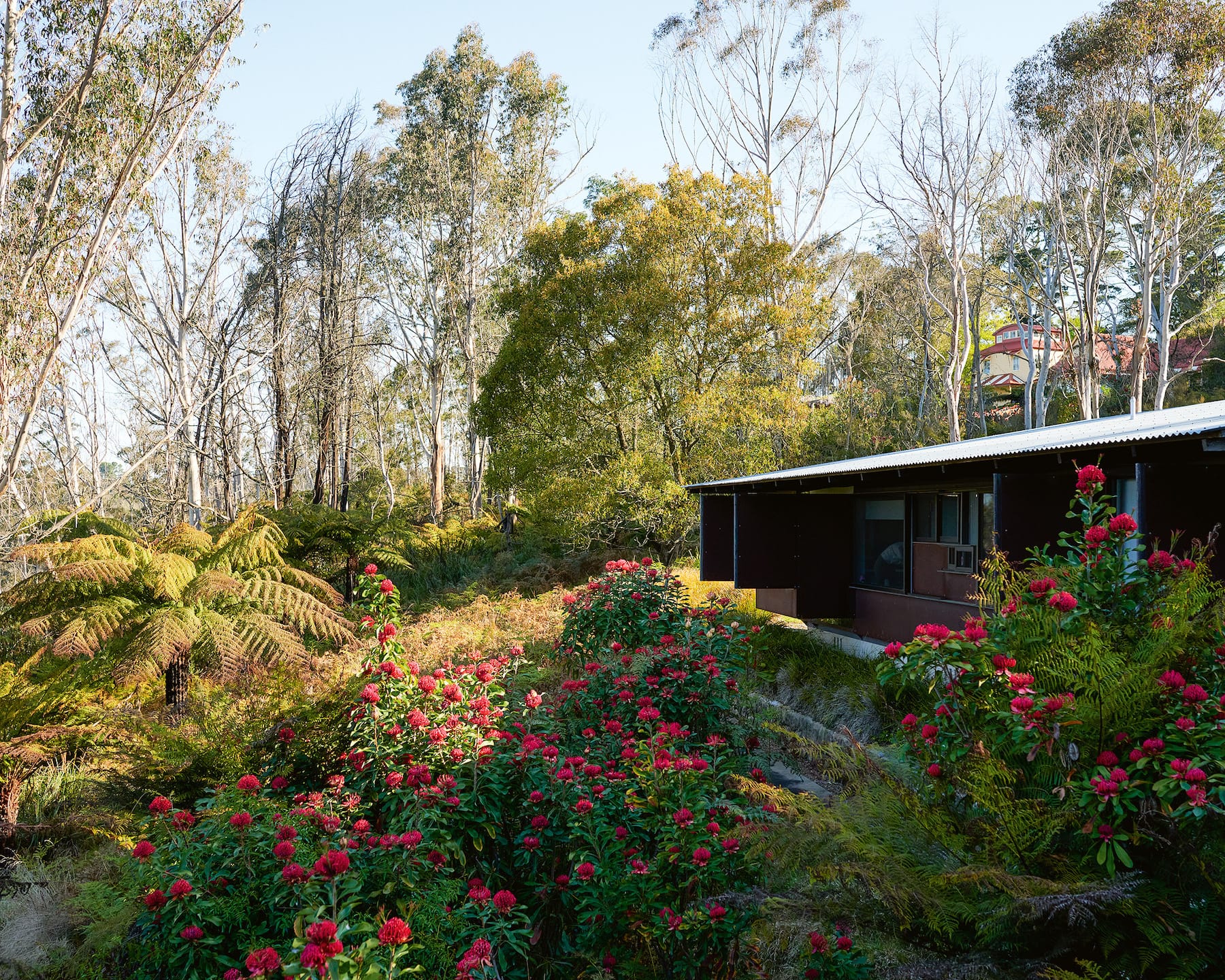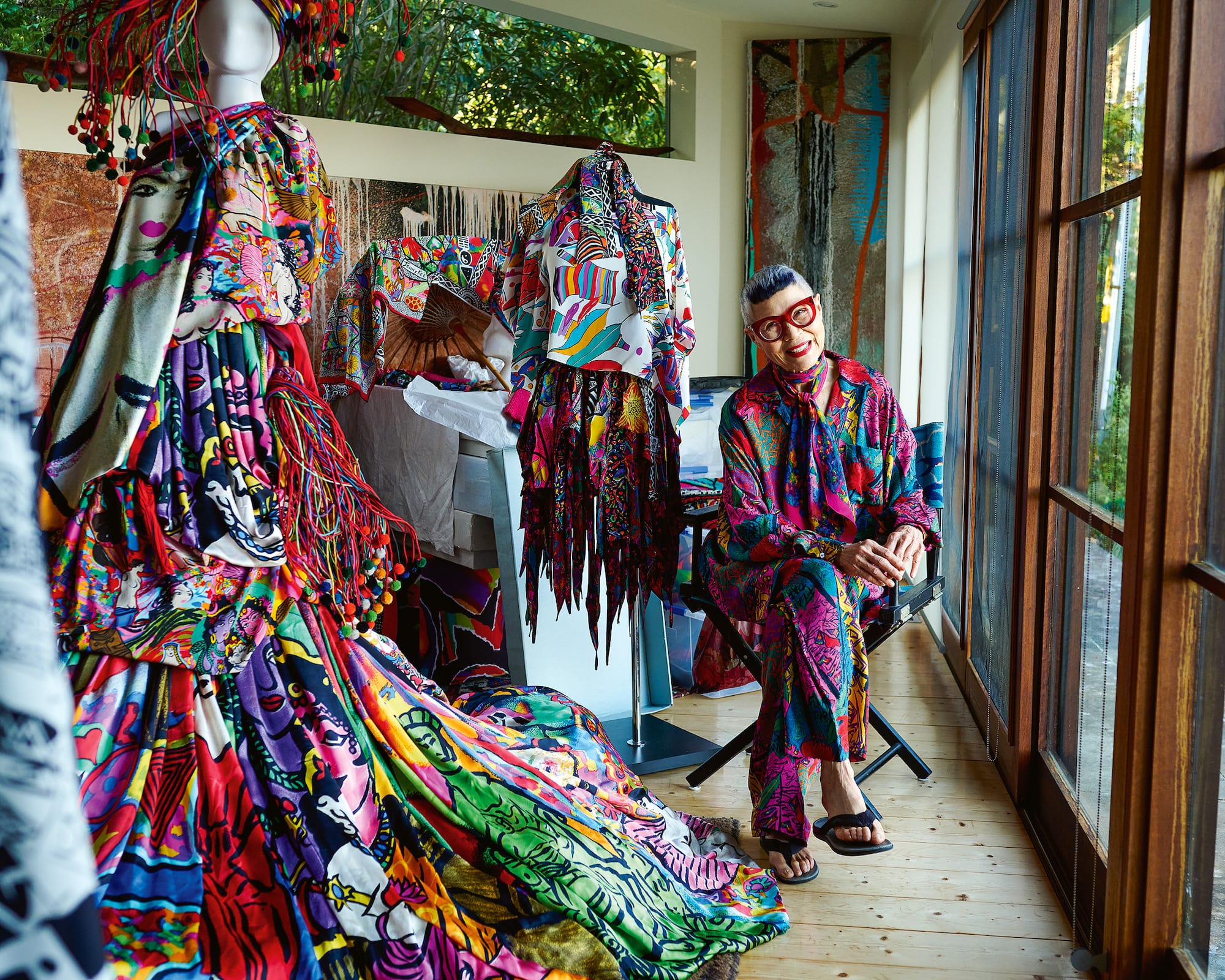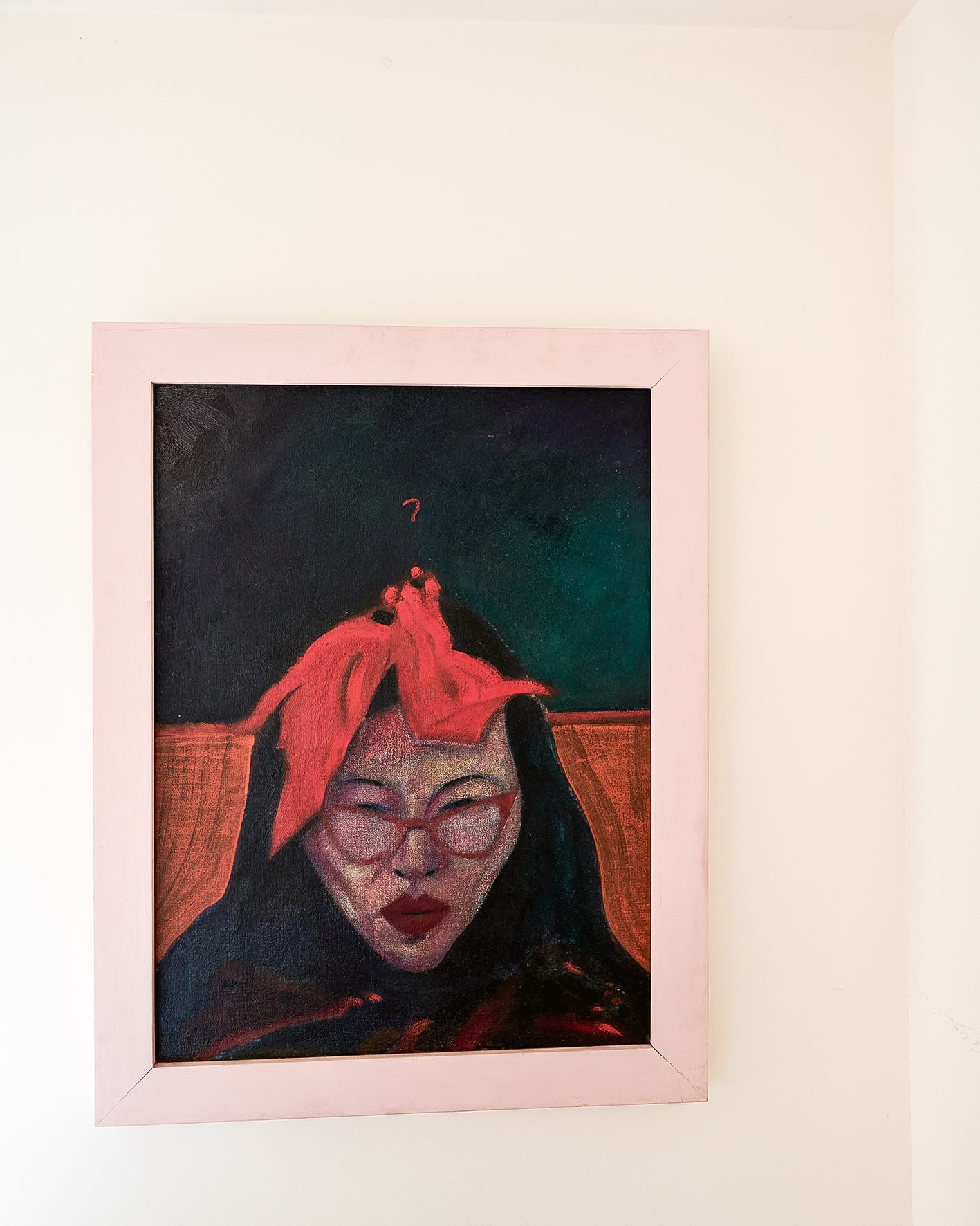
Inspired by the forest and her beloved waratahs, designer Jenny Kee is assembling fragments of her 50-year wearable archive to represent her life’s work.
Words Sarah Gilbert
Photography Hugh Stewart
JENNY Kee is working on her archives. And, at 77, there’s a lot of material. Looking around her house in Blackheath, in the Blue Mountains, it seems she’s living in an archive of sorts. Her 19th-century cottage is clad in recycled hardwood and her living room is lined in corrugated iron softened and brightened by her own fabrics – upholstered chairs and shag-pile rugs of her own design.
Sorting through her papers is tiresome work, but she is determined not to leave piles of unsorted stuff behind. “You feel completely free because you know that these beautiful times that you’ve lived through are recorded. It’s sort of a piece of history now.”
Galleries and the National Library will take what’s important. But the fashion designer is hanging on to what’s essential. She’s using select fragments of her wearable archive to create a major work: a collection of spectacular gowns that bring together all of her life experience, passion and creative force.


Born in Bondi, Kee started her design career in the early 1970s after returning from life in London and meeting her long-time collaborator, Linda Jackson. Together, they created the Flamingo Park Frock Salon, perhaps the single Aussiest thing in the nation’s fashion history. “I’d been in England for seven years, and to see the nature of Australia for me with such fresh eyes after living in a grey city, even though it was an exciting city, was sort of a revelation.”
A few years after the shop opened in Sydney’s Strand Arcade, Kee moved with her artist husband and small daughter to the Blue Mountains in New South Wales. Kee and Jackson brought all of the mountains’ bush colours and textures to Flamingo Park’s distinctively Australian aesthetic. “Our creative minds worked with the nature surrounding us,” Kee says. “It really did inform all the designs that I did, and certainly that she did.”
Of all the motifs Kee has used in her work, none has occupied a more central role than the waratah. Its shining red flowerheads greet you as you approach her bush retreat, rising from a bed of ferns on either side of the garden path.


Kee’s personal totem; a painting of one of her beloved waratahs. Photography by Hugh Stewart.
This is a wilderness of Kee’s making, to a large degree. While her verandah’s sweeping views across the valley to Mount Hay and Lockleys Pylon are supplied by the natural landscape, the vista was once blocked by pines. She and her late partner cleared them, and the bush made its way back to their threshold – gahnias and tree ferns now stand like friendly neighbours in her garden, and beyond them the elegant, balletic limbs of mountain ash reach into an endless blue. The tree ferns came of their own accord, but the waratahs were planted.
“Because I just love her,” says Kee. “I think she’s the queen of the bush and so vibrant. She comes out of fire. She’s so passionate, and she’s just a big flower in every sense. She is the reddest red that can be in the bush, just screaming and protesting, ‘Here I am!’ She’s a survivor. And all those qualities I sort of relate to.”
In the summer of 2019, when the mountains burned, Kee’s house barely survived. She had to flee with her ancient cat, Suki, and returned to find a blackened landscape. During the months of Covid isolation, she walked through the bush, as she always had. The weeds – ivy and blackberry and gorse and broom that was armpit-high – had all been burnt, making way for the native plants to shine again.
“To observe what happened after the fires was an extraordinary sort of revelation,” she recalls. “To see how destructive, how extremely and extraordinarily destructive fires are. The first shoot that comes up is the shoot of the grass tree, of the xanthorrhoea. And to see charred black, all the fronds, the little leaves of that xanthorrhoea and then this tiny bit of green coming out. Just extraordinary.”
Nature, too, is an archive, and the fire was part of its sorting process. The waratahs survived, and so did the tree ferns.


The designer in her studio, with her “twins” that sum up her 50-plus-year career; Kee's bold artistic style is evident throughout her Blackheath home. Photography by Hugh Stewart.
At the back of her house, Kee shows me her studio and a work she has called, in shouty capitals, the UNIVERSAL TRIBAL OZ TWINS: two spectacular gowns that incorporate all her fabrics. They’re sitting on mannequins that seem, also, to be enjoying the magnificent view through the glass wall.
Kee holds up a little smock she wore in her 20s, when she sold vintage clothing in London. “I wore that till I couldn’t wear it anymore, in the Chelsea antique market. It’s a Pakistani peasant dress.” She’s hoping to deconstruct and include it in one of these gowns that will represent her life’s work in original fabric design, clothing construction and memories.
“I’ve got the time to reflect on 50 years of my creativity and how I’m going to put that together, so that when those Tribal Oz Twins are manifest, they’re my history.”
Kee works on the creations when she feels the urge. She doesn’t have a deadline. She walks in the bush, carrying her backpack as she prepares for a silent trek in wilderness on the New South Wales south coast. She works on her paper archive. She listens to Bob Dylan as she strengthens her back on her pilates reformer at 1.30 in the morning – a necessary habit after she was injured in the 1977 Granville rail disaster. And, when inspiration strikes, she attends to her twins.
“It’s very exciting,” she says. “Am I going to cut it up? How am I going to do that? How am I going to put those thoughts of what and how I felt in that dress into this garment and make it meaningful?
“But what I’ve realised over time is that you can do anything. I’ve got an original brain and I know that. Who cares? I’m 77. I can do anything. I feel completely free. It’s a beautiful feeling, really it is.”